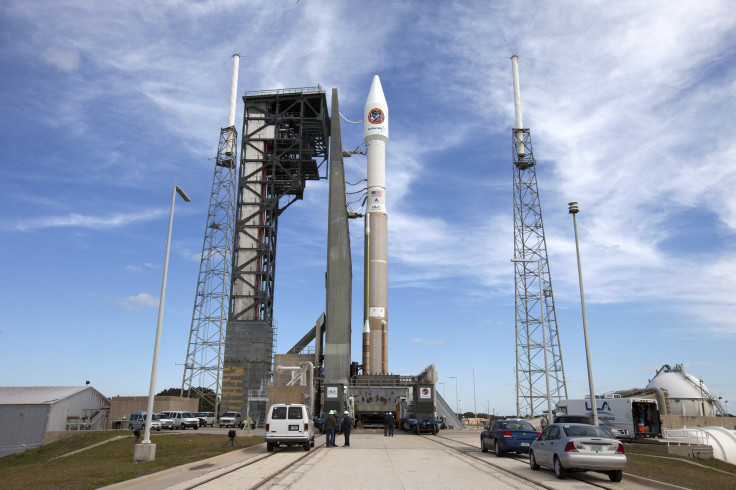Orbital ATK Launch Live Stream: Watch The International Space Station Resupply Mission Liftoff Here

Orbital ATK's fifth commercial resupply mission to the International Space Station is scheduled to launch Tuesday at 11:05 p.m. EDT from the Space Launch Complex 41 at Cape Canaveral Air Force Station in Florida. The Cygnus spacecraft will deliver its biggest payload yet of close to 7,500 pounds of clothes, food, supplies and scientific instruments to the space station. Cygnus is also part of three scientific investigations, one of which includes a large fire set inside the spacecraft after it departs the space station.
The Cygnus spacecraft, named S.S. Rick Husband in honor of the astronaut who helped build the space station, is carrying a slew of scientific investigations that will stay aboard the space station. "The S.S. Rick Husband will launch aboard an Atlas V rocket, once again exhibiting Cygnus’ compatibility with various launch vehicles. Once we fulfill our cargo resupply objectives, we will conduct science experiments onboard the spacecraft and deploy CubeSats during the mission; both of which are 'firsts” for Cygnus,' said Frank Culbertson, President of Orbital ATK’s Space Systems Group, in a statement.
For the first time ever, researchers will be able to observe meteors entering Earth's atmosphere from space as part of the Meteor Composition Determination (Meteor) investigation. The investigation will collect video and images of meteors to learn more about their composition, size and density. Another investigation takes its inspiration from geckos for a new adhesive gripping device. A new 3D printer will also launch to the space station Tuesday.
The Strata-1 investigation will focus on regolith, the rocky debris that serves as top soil on asteroids, the moon and other celestial bodies. Regolith, unlike Earth's soil, does not contain living organisms and its behavior is not well understood. The investigation involves two tubes — one containing three different sized glass fragments and the other containing pulverized meteorite material — that astronauts will observe any changes in layering of the regolith substitutes. Understanding how regolith behaves is important for the upcoming Asteroid Redirect Mission where a spacecraft will need to anchor to the regolith.
Aboard the space station already has an all-purpose exercise machine, but it's too big to work in the cramped confines of a spacecraft heading toward Mars. The aptly named Miniature Exercise Device (MED-2) is a 65-lb all-in-one exercise machine that combines aerobic and resistive workouts. During their time in space, astronauts lose muscle mass and bone density, which is why space station crew members work out two hours every day.
After Cygnus completes its mission, it will undock from the space station where two more scientific investigations take place. The Saffire-I investigation will set a large-scale fire within the spacecraft in a larger housing. Previous experiments studying fire's behavior in space have been limited for safety reasons. After that experiment is complete, the Reentry Breakup Recorder will observe the breakup of Cygnus after it enters Earth's atmosphere.
© Copyright IBTimes 2025. All rights reserved.




















